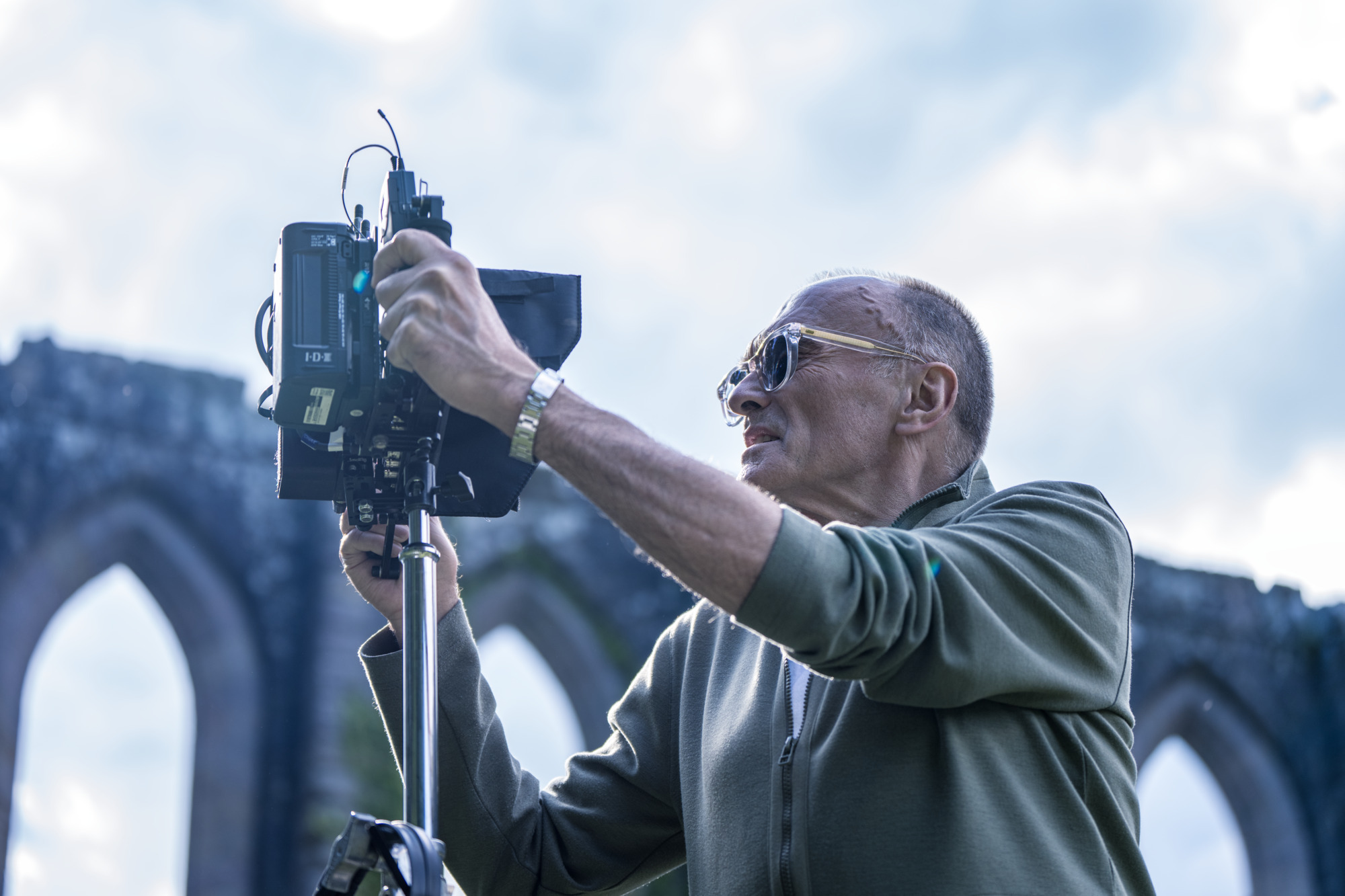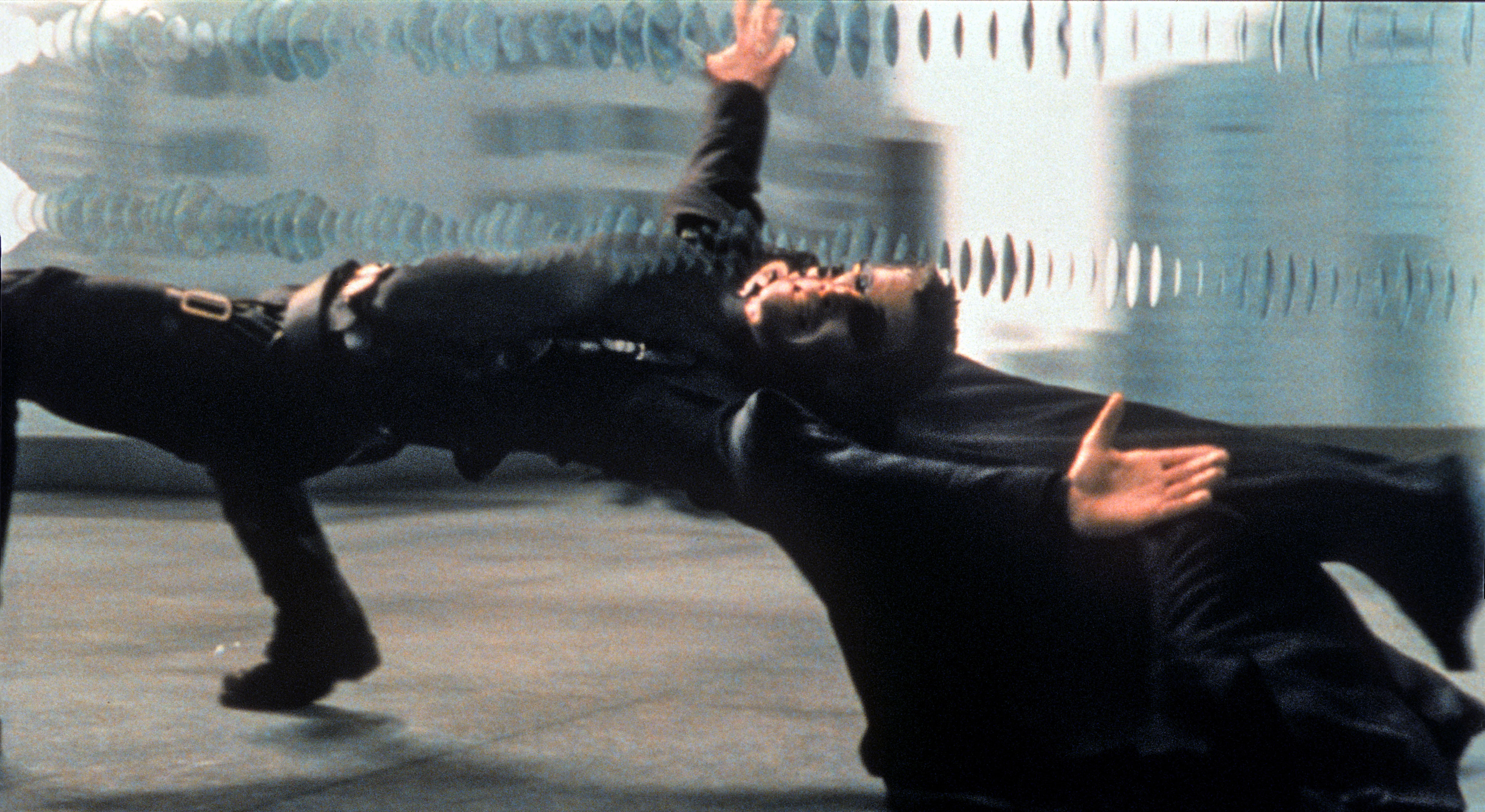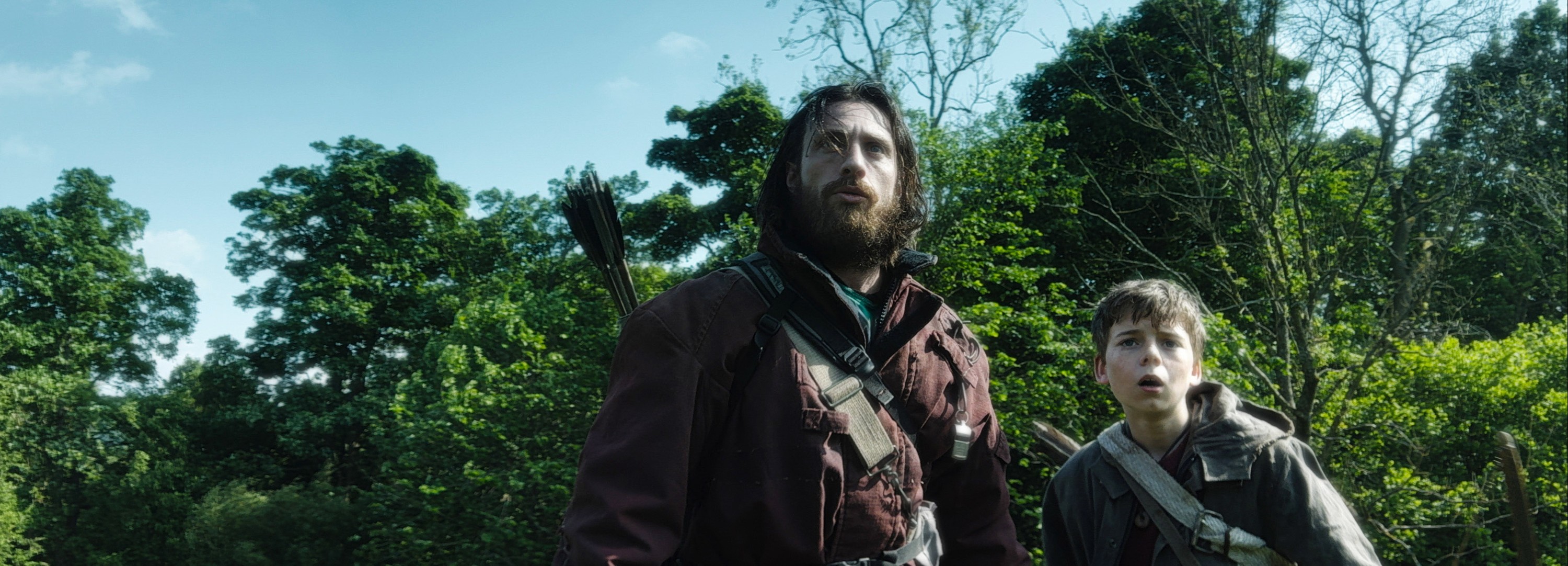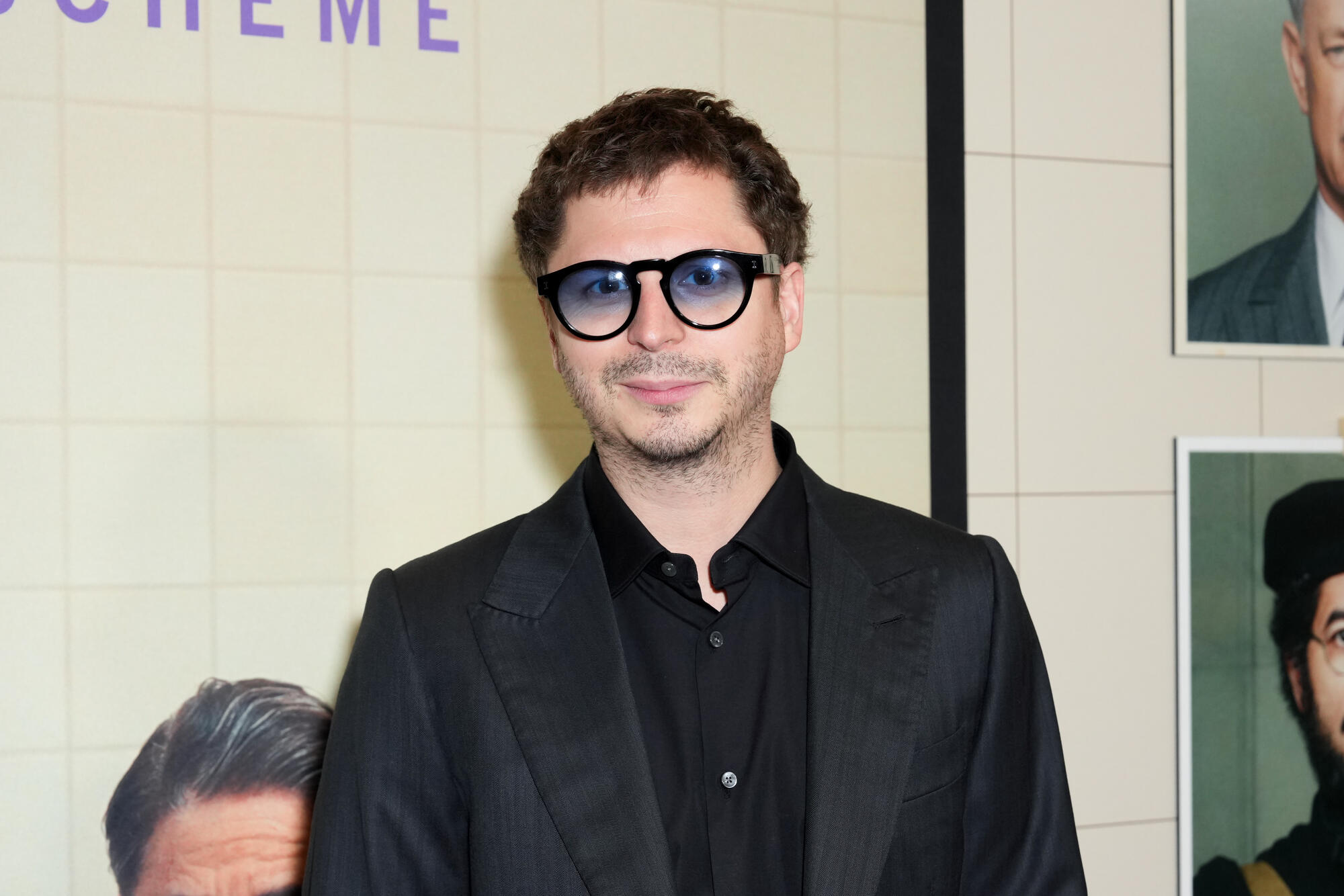In 2002, “28 Days Later” set the world of horror on its head. Shot on a prosumer DV camera, director Danny Boyle and cinematographer Anthony Dod Mantle had found a mode of production that matched the violent speed of the rage virus itself, and the new breed of zombie it gave birth to.
23 years later, Boyle returned to the franchise with “28 Years Later,” but this time with a $75 million production budget. Yet despite a major studio’s backing of the film, as well as its subsequent and already-shot sequel, the director reached for a camera even more accessible than DV was in the early 2000s: the iPhone. IndieWire recently talked to Boyle and Mantle to find how and why.
Why the iPhone?
Mantle joked that there was no real discussion between the longtime collaborators about the decision to use iPhones, the director had already made up his mind, and there was no talking him out of it.
“Danny was very good in articulating specifically what he loved about ’28 Days Later,’” said Mantle. “He talked more to me about ’28 Days Later’ now, 23 years later, than he did at the time.”
Three years ago, Boyle snuck in the back of a BFI screening of his 2002 film, and he was pleasantly shocked by how violent and visceral the grainy DV-movie still played to a packed audience. The experience inspired him to take the same approach with “28 Years Later.”
“There were certain aspects to the first film that not just pleased him, but he also equated with what he wanted technically and narrative-wise, everything that kind of gelled on ’28 Days Later,’” said Mantle. “He wanted to rediscover, not the same, but something equally relevant and appropriate for this film. He then chucks out the word ‘iPhone,’ which I don’t necessarily think would’ve been my first choice, but I get it: He wants to shake things up and he wants to shake me and the whole machinery up — a technical base, which comes with a kind of rule set.”
Back in 2002, Boyle had also intellectually justified the use of the DV because he imagined the small prosumer cameras would be how people who lived through the rage virus outbreak would have documented it.
“When you’re doing a sequel, and there’s such a large gap in time, you want to have some lineage to the first film technically as well as story-wise” said Boyle while he was guest on the Filmmaker Toolkit podcast, “Technology-wise, the equivalent of those cameras then are the smartphones now, and the way we all record our lives really.”
The Right Cinematographer

Boyle told IndieWire that despite the iPhone having image quality and resolution that is now suitable for a major motion picture, there is a misnomer that that means anyone can make a movie with it. If anything, getting the iPhone to do what Boyle needed on “28 Years Later” required an even more skilled and experienced cameraperson than if he’d used a modern professional camera.
When Boyle first hired his now go-to cinematographer, Mantle had already been on the cutting edge of using small digital cameras through his work with Dogme 95 directors Thomas Vinterberg (“The Celebration”) and Lars von Trier (“Dogville”), and later the avant-garde filmmaking movements influence on American films like Harmony Korine’s “Julien Donkey-Boy.” And even now, as a well-established Oscar-nominated cinematographer, who has shot $200 million films, Mantle prides himself on an open-minded approach to filmmaking that strives to break convention.
“I’ve been there with other directors working in what you may call inferior formats, but striving to get something interesting out of it, which is not necessarily to replicate the synonym of beauty, or the effigy of beauty, as [defined by] the tradition of cinema,” said Mantle.
Regardless of format, the cinematographer said there are aspects of the image from any and every camera that both displease and attract him. The key is to test and play with it until he fully understands both. He recalled during testing the iPhone for “28 Years Later” the moment he first started to see images he loved.
“We’re on a beach on the miserable south coast of England in January with one of our PAs, with his trousers rolled up in the waves, and discovered moments on the phone that were hectically out of control and the sensor was struggling and AI was all over the place,” rejoiced Mantle.
Up Close & Personal
Both Mantle and Boyle discussed their experience of loving a photo or video taken with an iPhone, but then struggling to replicate it with better and more expensive cinema cameras. The commonality in those images is that they were taken up close and personally.
“When you have a smaller distance between the actual sensor and the front glass of the lens, which is the case on mini cameras — and often inferior quality mini cameras, like medical cameras — you can put cameras in situations where no other camera can go,” said Mantle. “And you can get details that suddenly immerse the audience in an extraordinary way in a scene. And I’ve always done that, I’m a big advocate of it. Even if I’m doing Shakespeare.”
Combined with the small form factor of the thin iPhone, this meant that Boyle could get even tighter in on the visceral action than with the DV cameras in the previous film. It was especially true of the zombies, such as when they rigged iPhones to the actors playing the Slow-Lows (the heavy-set slug-like zombies) to get immersive shots of them slithering away on the ground, or the train sequence with the frightening Alpha Samson.
“What was wonderful is that you could give the actors the phone, the camera at some point,” said Boyle. “There’s one special [shot] towards the end of the film, where Aaron [Taylor-Johnson] is running, beating against the tide, to try to reach his son, but it’s too late. And you see for a moment a look on his face as he’s running at full [speed]. Now you can’t do that with conventional cameras because he would have to slow down to allow the weight of the crane or the steadycam, or whatever it is that’s trying to track him. It’s very, very difficult to get that close and that intense.”
Lenses
In that spirit, Mantle tested “every” small, consumer iPhone lens he could find. He even found a few that became his go-to’s, calling special attention to Moment’s $150 1.33 anamorphic lens. That being said, Mantle anticipated early in prep that not every setup would be an immersive, close shot that played to the iPhone’s strengths.
“Even though Danny had a set of rules, I know him well enough to know that he will suddenly have an idea that may suddenly be something that a virgin iPhone couldn’t do. I could already see it in some of the storyboards,” said Mantle. “There were some indications that he had lots of ideas swimming around in his great imagination, which I love, so I had to cover myself.”
As good as the iPhone is in close proximity to its subject, it struggles with wide shots and zooms, and no $150 consumer lens was going to fix that problem. Like he did with the DV cameras on “28 Days Later,” Mantle and his team created a lens adapter that made it possible to add cinema-quality prime, anamorphic, spherical, and zoom lenses to the iPhone.
“There are certain aspects to [Boyle’s] storytelling that requires certain specific lens, be it a long lens, a zoom, a changing a focal length, or control of focus to a degree that’s not necessarily all that easy on an iPhone,” explained Mantle of when he’d resorted to using cinema lenses.
And yes, even though he’d use the smallest, lightweight cinema lenses available, adding a professional lens to a .3-inch wide iPhone gets a little ridiculous, defeating the purpose of its small form factor. But nothing got sillier, or more difficult, than Mantle’s favorite experiment.
“I also attached telescopes,” reported the cinematographer. “Telescopes, the most obscure gynecological instrument I’ve ever seen in my life. A telescope with an iPhone on the back end of it, which was a nightmare to use, but it was incredibly exciting.”
What Wasn’t Shot on the iPhone
Despite reporting that “28 Years Later” was shot with a variety of different cameras, Mantle was clear with IndieWire: Everything was shot with the iPhone 15, with the exception of drone shots and the reddish infrared footage of the zombies feasting.
“I gave the drone operator, the pilot, the opportunity of using iPhones and he could do it, he could adapt to, but I felt he wasn’t completely comfortable,” said Mantle. “And I think a drone pilot, especially flying the way Danny and I wanted him to fly, I think it was essential he had the tools that he needed and felt comfortable with.”
Boyle explained the drone shots were of particular importance in this film because the ability to fly over the untouched landscape, lending to the idea that the English countryside had gone untouched for 28 years since the rage virus outbreak.

Mantle tried for a while to get the iPhone to achieve the night-time photography that appeared to be part thermal, part infrared footage of the zombies at night.
“I was willing to strip it down or manipulate [the iPhone to achieve the shot], but the resolution, the quality of the image, was not up to the level that even I wanted,” said Mantle of the specialty shots. “My dear friend and B camera operator, Stefan Ciupek gave me the tip of this old Panasonic camera, which we found four of in Britain, from three different rental houses. It’s a bit of a dinosaur, but we got them up and that achieved the strange night vision stuff you see in the middle of the film.”
Bypassing Apple iOS & AI
Regardless of how the iPhone image quality and resolution has improved, one of the major challenges of using it as a professional tool remains how hard it is to get around its auto settings, and the built-in AI and 3D image sensing designed to help us mere mortals take better photos. For example, if you are shooting in low light, your iPhone camera automatically adjusts a combination of the aperture, shutter speed, and sensor’s light sensitivity — each of these adjustments has a profound and different impact (depth of field, image clarity, how motion is represented) on the image. It’s the type of adjustment professionals need full control over.
“You need a skilled cinematographer to manipulate [the iPhone] because there are restrictions to do with the algorithm that operates them, that you need to override at certain times for necessities of drama,” said Boyle.
But Mantle refused to take sole credit. “You need a lot of help. I had to deactivate [the algorithm], and Apple was very compliant. I engaged with them and I had five to 10 of these Apple wizards from the bunker in San Francisco on the blower with me and my guys trying to work out how to control certain things on the iPhone, and try to understand a little bit more about the DNA of it. Because they understand that we are creatures of control, and I had to let it go sometimes, but I also had to know what I had to stabilize inside the phone. So they helped me get there and were quite transparent.”
Mantle had to have the most stable and unmanipulated image for the visual effects team, more so than his own aesthetic purposes. He would only use the big, main lens on the phone, and capture in the RAW format. But more than anything, he had to turn off all the AI imaging technology.

“In post there will be between 400 and 800 effects shots, and if you’ve got all sorts of AI bubbling around in the back of your signal, then you’re going to give your VFX boys grief,” said Mantle. “There’s all sorts of 3D mapping, this LiDAR (Light Detection and Ranging), in that phone. That’s an astonishing instrument, but for what I needed and what I had to do, I had to contain it. Contain the beast.”
Because Mantle was shooting a $75 million studio film on Apple’s consumer smartphones, which (like this article) is fantastic and free publicity, the company was motivated to help the cinematographer essentially jailbreak its own device in a way that indie filmmakers struggle to figure out on their own. Mantle did give a shout out though to Apple’s camera partner Blackmagic, and it’s iPhone camera app, as a useful consumer tool.
“I also took meetings with Blackmagic, because Apple collaborates with Blackmagic and vice versa, so I could then get them to give me certain updates and adjustments to their app, which was essential for us because we were playing with the [shutter speed].”
Lightweight: Landscape & Rigs
The iPhones are so small and mobile, which was a key aspect of Boyle’s vision for the film, especially as Spike (Alfie Williams) explores the mainland.
“The iPhones are lightweight, they allow you to go to certain areas with a very small footprint of a crew, and we wanted the landscape to feel like nobody had been in it for 28 years, and our actors were the first people to walk across these fields,” said Boyle.
For his part, Mantle kept the spirit of Boyle’s vision by going mostly handheld with the iPhone, never resorting to steadicam, and only using Ronans and Gimbals when the camera needed to have a gliding movement.
BarCam: or “The Poor Man’s Bullet Time”
The biggest addition to Boyle’s camera arsenal for capturing the violent speed of zombie was what Mantle referred to as the BarCam — a rig of between eight and 20 iPhones (pictured at the top of this page) that works like what Boyle dubbed a “poor man’s bullet time” first introduced in “The Matrix.”

“It would record bits of the violent action, and it is startling because one of the jobs you have in a horror film is to try to make the violence, the brutality, impactful — to make it fresh and feel original and different and have that visceral impact on your audience,” said Boyle.
Sometimes, Boyle and editor John Harris would use the array of cameras for a startling jump cut: An arrow punctures a zombie’s head, and the film would jump a few cameras over to watch it come out the other side.
“Each one’s slightly different. You can use the full surround, and we do that at one point where Samson (Chi Lewis-Parry) drops into the train,” said Boyle. “Or you can pick certain moments of it to jump around. I like it because it steps you inside the very violent action for a moment, and then chucks you back out again to your normal 2D perspective. It’s lovely that horror allows you to use a technique like that, which isn’t classical, that has a startling effect upon you.”
Why a 2.76 Aspect Ratio?
As Boyle explained, shooting widescreen — normally the widest we see on the big screen is 2.39: 1 aspect ratio — is an unusual choice for a horror film.
“In a horror movie [an aspect] ratio like that as well gives you a slight problem as an audience, which is it’s a scanning ratio — you scan it rather than just absorb it as one, you are moving [your eyes across the frame],” said Boyle. “And for our horror movie, it means that the threat could be anywhere in that landscape. That was the idea of it, there’s no way to run to avoid it. It’s going to be everywhere once it comes.”
Boyle pointed to “The Hateful Eight,” “The Creator,” and “Sinners” as films that achieve something similar to what he was going for with the use of widescreen in “28 Years Later.” But the other reason for widescreen was the landscape itself, not just what emerges from it.
“We wanted to capture the nature and the landscape and try to make it feel as epic as possible,” said Boyle. “We also say innocence is a wonderful thing to have in a horror film because it’s dynamically the opposite. It’s the same with beauty. You want make it as beautiful and rich as possible, and there’s horror, and you’ll crash, the two collide into each other. The brutality and the beauty are side by side. Those are the principles that are the reason that we used it.”

Up until production, Boyle and Mantle had planned to shoot in the standard CinemaScope aspect ratio before the DoP made a discovery.
“For a long time, gonna be 2.39:1, but quite late in the [process], we discovered that we had a bit more real estate that we could extract from the sensor that gave it a 2.76:1 format, and we both agreed immediately. That was fun,” said Mantle.
To hear Danny Boyle’s full interview, subscribe to the Filmmaker Toolkit podcast on Apple, Spotify, or your favorite podcast platform



